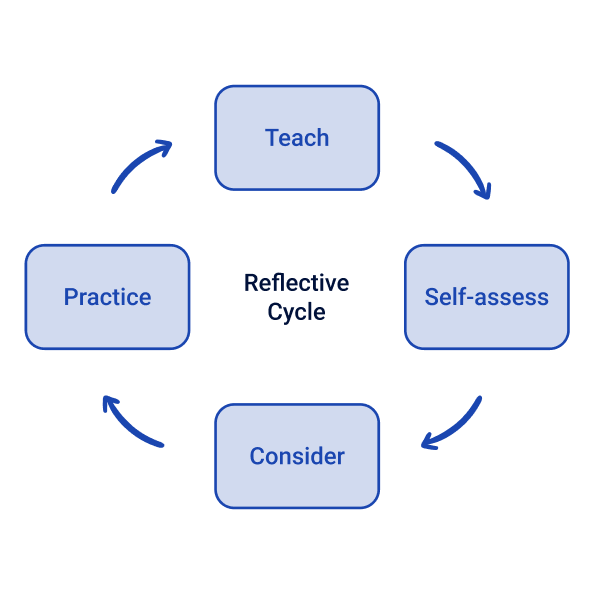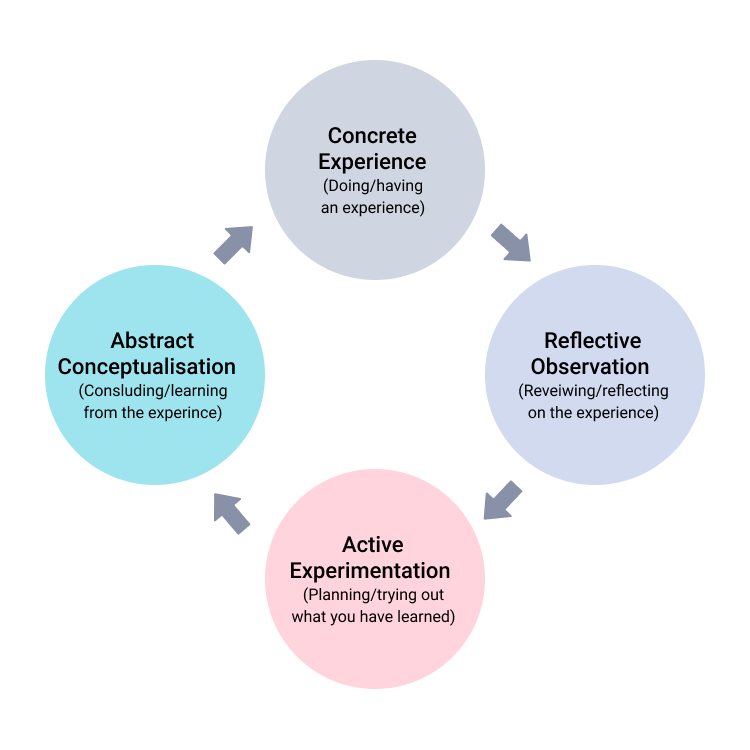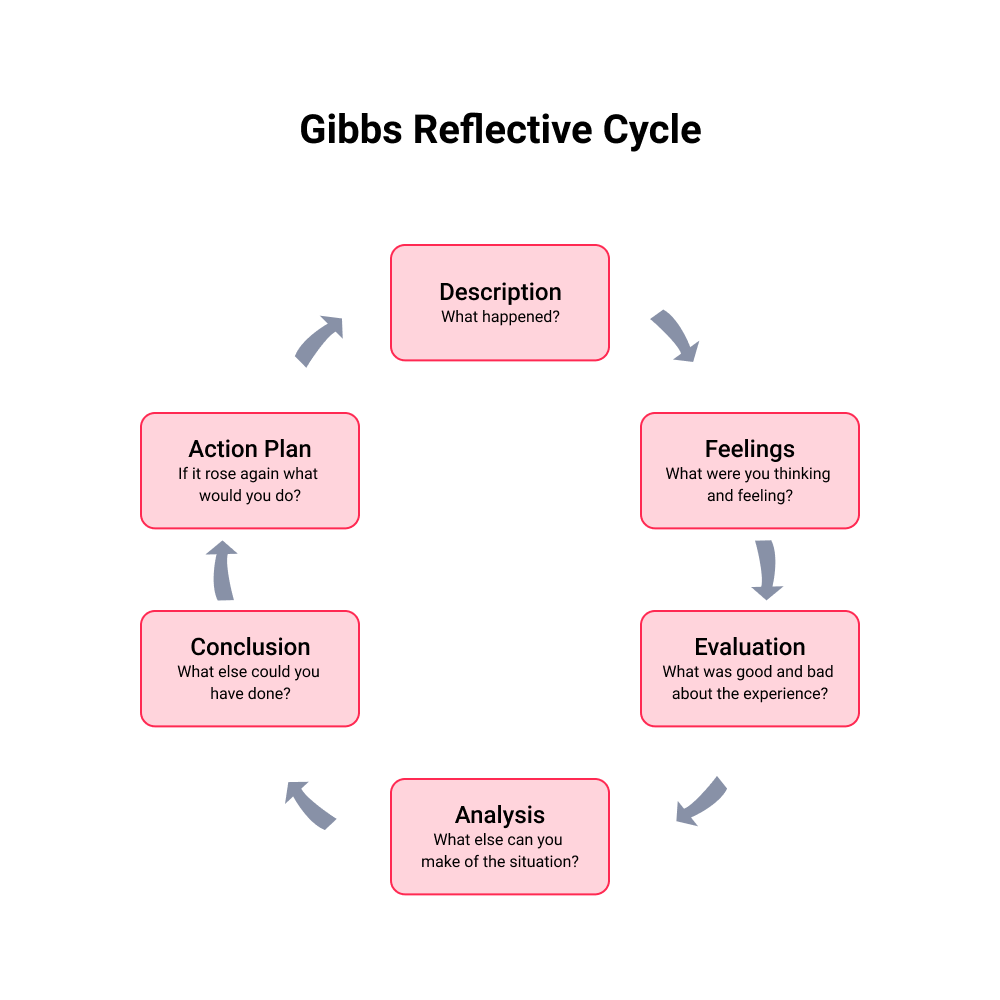The contemporary discussion on reflection has mainly been associated with Schön (1983, 1987) who coined terms such as ‘reflective practice’, ‘reflection-in-action’, ‘reflection-on-action’, ‘reflection-for-action’, ‘knowing-in-action’ and ‘technical rationality’. The most significant among these is his concept of reflection-inaction which is the ‘almost unconscious, instantaneous reflection that happens as a more experienced teacher solves a problem or dilemma’ (Harrison, 2008: 10). Reflection-on-action takes place after the event, e.g. a teaching session and is a more deliberate and conscious process. Reflection-for-action means the deliberation involved in the pre-action deliberative/planning phase of teaching. Knowing-in-action refers to the subtle or intuitive knowledge that practitioners demonstrate as an outcome of long-term practical experience in a professional role. By “technical rationality” Schön means the application of research-based propositional knowledge in a practical teaching or learning situation. An example of this might be the implications of propositional knowledge such as theories of learning or personality development for teaching students with different personality traits or different socio-economic backgrounds.
Reflection has been hailed as useful by most researchers who have written on the subject. Leading writers on the concept from Dewey (1933) onwards to Schön (1983, 1987), Van Manen (1977, 1995), Zeichner (1981, 1987, 1994, 2010), Zeichner and Liston (1996), Valli (1997), and Calderhead (1989, 1993) have discussed the various benefits that reflection as an educational concept can provide to teachers and practitioners. Dewey (1933) for instance associates reflection with the development of useful qualities such as ‘open-mindedness’, ‘responsibility’ and ‘whole-heartedness’ (See also Pollard et al., 2008). Open-mindedness means being open to all possibilities in the process of understanding a situation, responsibility refers to the consideration of the consequences of one’s actions and whole-heartedness connotes looking at a phenomenon from all possible angles in order to have a holistic view. These characteristics are useful as they bring in thoughtfulness, depth, honesty and integrity to the process of learning and teaching.
Dewey regarded reflection as a useful practice also because of its help in bringing in a ‘thinking’ demeanour. This, he suggests, guards against routine and impulsive action. Reflection is hence a way that leads to deliberative action and to the use of scientific, rational and experimental means during the process of education. Although Dewey is regarded as a pioneer in reflection, recent works have explored the usefulness of reflection beyond its grounding in scientific rationalism. Schön (1983, 1987) for example emphasises the usefulness of reflection more due its intuitive and craft value than in terms of scientific rationalism, empiricism and experimentation. Schön argues for the usefulness of intuitive reflection-in-action in comparison to ‘technical rationality’, a concept closer to Dewey’s philosophy of scientific rationalism. Thus there is a clear distinction between ‘Dewey’s scientific reflection’ and ‘Schön’s artistic reflection’ (Fendler, 2003: 19).
According to Luttenberg and Burgen (2008) reflection can play a role in enhancing the professional development and improvement of skills and competence of teachers. Reflection they argue can also help teachers cope with difficult situations and find solutions to problems that have not been dealt with by experts through research.
The process of reflection is a cycle which needs to be repeated.

- Teach
- Self-assess the effect your teaching has had on learning
- Consider new ways of teaching which can improve the quality of learning
- Try these ideas in practice
- Repeat the process
Reflective practice is “learning through and from experience towards gaining new insights of self and practice”
(Finlay, 2008)
Reflection is a systematic reviewing process for all teachers which allows you to make links from one experience to the next, making sure your students make maximum progress. Reflection is a basic part of teaching and learning. It aims to make you more aware of your own professional knowledge and action by ‘challenging assumptions of everyday practice and critically evaluating practitioners’ own responses to practice situations’ (Finlay, 2008).
The reflective process encourages you to work with others as you can share best practice and draw on others for support. Ultimately, reflection makes sure all students learn more effectively as learning can be tailored to them.
Listen to these educators discussing what reflective practice means for them. How do their ideas about reflective practice compare with yours?

